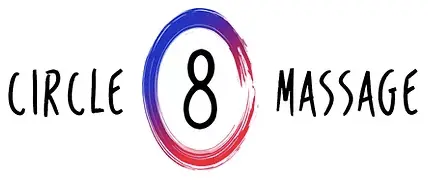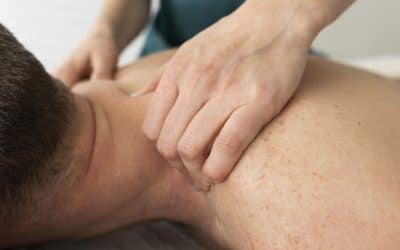Myofascial release therapy is a massage technique used to relieve pain in a patient’s myofascial tissues. These are thick, connective tissues that support your muscles. During this therapy, the therapist doesn’t specifically focus on the muscles. Instead, the focus is on releasing tension in the fascial tissues.
What is Myofascial Tissue?
Myofascial tissue is a network of tissue that goes throughout the body. It connects the muscles, joints, and bones while offering support to organs by keeping them in place. The fascia looks like a single sheet of tissue; however, there are multiple layers of tissue that work together.
Between these layers is a liquid called hyaluronan that helps the tissue stretch and encourages free range of movement. When this liquid becomes thick, sticky, or dries up, it can have a major impact on surrounding body parts.
When a person feels stiffness or pain in their body, it can come from different tissues in the body. Myofascial pain is different from other types of pain. It occurs in places where the tissue meets and crosses. The main problem can be challenging to identify because this pain can radiate from one area and spread.
Myofascial tissue usually feels elastic and movable. Tight tissue can restrict movement in a person’s muscles and joints. As they move differently to overcome the loss of movement, the patient may develop additional tightness without realising it. This can lead to widespread pain and discomfort.
Understanding Myofascial Release Therapy
During myofascial release therapy, the therapist takes time to feel the myofascial tissue for areas that are more tight and stiff. These are places that can cause the patient pain that may radiate to other areas.
If you have myofascial pain syndrome, it’s essential to seek assistance from a trained specialist who knows how to identify myofascial tissue problems. Myofascial massage is different from other types of massage; the techniques used may vary from therapist to therapist.
While other types of massage can be relaxing, myofascial release therapy can be quite intense and painful. The therapist uses their hands to massage and stretch your myofascial tissues and get rid of knots.
In some cases, the therapist may use other tools, such as a foam roller or ball, to assist with separating the tissues. You may feel sore right after the massage; however, the results can include an improved range of motion and less pain and stiffness.
Myofascial tissue can become tight in the following areas:
- Head
- Jaw
- Neck
- Shoulders
- Arms
- Lower back
- Hips
- Calves
- Feet
What are the Benefits of Myofascial Release Therapy?
Patients usually don’t experience relief from one myofascial massage; however, regular myofascial release massage therapy can result in the following benefits:
- Improved range of motion
- Reduction of pain and stiffness
- Increase the body’s natural healing process
- Overall relaxation
- Improvements in circulation
- Relief of stress
Is Myofascial Release the Same as Trigger Point Therapy?
Yes, myofascial release massage is also called myofascial trigger point therapy. That’s because myofascial pain comes from various trigger points in the body. These trigger points are stiff areas that may feel like knots in the muscles.
These tightened areas can restrict muscle and joint movement, and you may experience pain at the site of the trigger point. It’s also possible that these trigger points could cause pain throughout the body. Myofascial release therapy works to release the tension in these trigger points so you can find relief.
Who Can Benefit from Myofascial Release Therapy?
Myofascial release therapy can be beneficial to anyone who has tightness and pain in their myofascial tissues. The therapy may help people who have experienced:
- Physical trauma (falls, car accidents, and more)
- Scarring (from burns, surgery, and other conditions)
- Inflammation (from bursitis, osteoarthritis, and other conditions)
- Compressed nerves (caused by herniated disks, carpal tunnel syndrome, and more)
- Repetitive stress injuries (from heavy lifting, poor posture, and more)
Risks of Myofascial Release Therapy
Myofascial release therapy does carry some risks, like other massage methods. It’s possible myofascial release therapy could cause these issues, though they are rare:
- Internal bleeding
- Trouble moving your muscles
- Short-term paralysis
- Nerve damage
If you have any of the following conditions, talk with your healthcare provider. They may suggest that you avoid myofascial release therapy or try another kind of massage therapy:
- Bone fractures
- Burns
- Open wounds
- Deep vein thrombosis (DVT)
- Conditions that require blood thinners
- Metabolic conditions
How Will I Feel After Myofascial Release Therapy?
After your treatment, it’s essential to drink more water to rehydrate your body and help it flush out toxins released from tissues. This can ease some of the soreness you may feel after the massage.
Some patients may become nauseated or lightheaded. They may develop soreness during or after treatment. This should only last a day or two, and you should feel less pain. You should also begin to move more easily than you did before the massage. If soreness lasts for more than a day or two, be sure to call your massage therapist.
It’s also possible that you may feel more energised, relaxed, tired, emotional, calm, quiet, exhilarated, grounded, moody, or a combination of these feelings.
Remember to be gentle with yourself during this healing process. Drink plenty of water and if you feel tired, rest.
And remember, if you experience anything that seems unusual or more painful than it should be, call your massage therapist and let them know. And ask them any questions or share your concerns about the treatment at any time.
Summing It Up
Myofascial release therapy can be beneficial for many people who experience myofascial pain syndrome. This form of massage can be intense and cause some pain; however, this usually resolves in a day or two. There are many benefits that go along with this therapy, including reduction of pain, increased range of movement, and so much more.
Again, be sure to discuss any concerns and ask questions to see if this type of massage is right for you. It can bring relief to many people who experience pain and tightness in their myofascial tissues.







